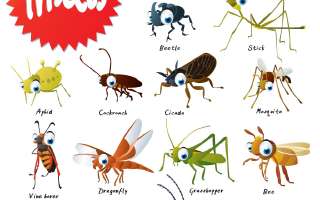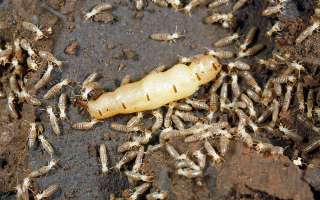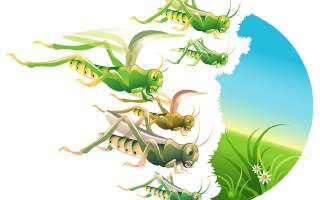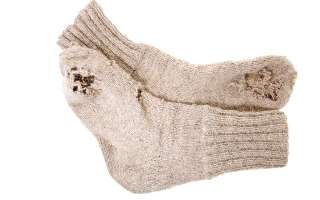19 items in this section. Displaying page 1 of 2
The Wonderful World of Insects
What is an Insect? Insects are found all over India from the icy Himalayas to the burning sands of the Thar Desert. They are found in the murky depths of rivers and lakes, and in the grass in your neighbourhood park. In fact, insects are everywhere-flying in the air, hidden among leaves and flowers, buried deep in the ground and even swimming in the water! Some insects are so small that you may not be able to see them while others like certain beetles are as big as a mouse....
Why do Flies have Compound Eyes?
Just like a man woos the woman he loves, takes her to nice restaurants, buys her presents, and courts her to impress her before marriage, animals too choose their mates through courtship. Since animals cannot do all these, they do it differently. Some animals put up a colourful display, while others give little gifts to their beloved – a choice worm, a designer nest and so on. A few species display their love through a series of grunts and others, like the Saurus crane or the stickleback fish, perform an intricate courtship dance....
Which Insects Live the Longest?
Take a look around. Which insects do you see? A fly sitting on your computer screen, a mosquito buzzing in your ear just as you drop off to sleep, a butterfly flitting about in the garden outside, or how about the ants that made off with the remains of a dead moth? Most of the insects we see around us have rather short lives. A few hours, a few days, that’s about how long most insects last....
Roach Sense
Have you ever caught a glimpse of a cockroach scurrying across your kitchen floor? Well, by the time you manage to get your hands on a roach repellent, the cockroach would have disappeared. Not surprising really, considering you are dealing with one of the greatest escape artists in the insect kingdom. Yes, cockroaches or roaches for short, are adept at wriggling out of tight spots. Whether it is a frog lurking behind a bush, or a descending broom, these creatures have an uncanny ability to scent danger....
Why do Locusts Swarm?
Have you ever tried chasing a frisky grasshopper? If you have, you will definitely know that scampering after a jumpy bug is not an easy task. Most species of grasshoppers have a keen sense of hearing and the moment they sense trouble, they can hop fast and furious! Sometimes, shortage of food turns grasshoppers into migratory insects as they venture out in search of newer pastures. This situation happens when the species begins reproducing rapidly and does not have enough food for all the members of its community....
Mosquito Menace
Guess what besides fat raindrops, rain clouds in Mumbai bring? Those tiny terrors, mosquitoes. Result: nights spent tossing and turning, and swatting the insects. But the next morning you wake up with those tell tale red marks on your arms, pause to think if you took a bath or not the previous night. That’s right. Human sweat turns mosquitoes on more than anything else. Research carried out by scientists in The Netherlands say that mosquitoes are actually quite finicky about whom they sting and never ever nibble at random....
Do centipedes really have 100 feet?
They are called centipedes because it is believed that they have 100 feet. Actually, they don’t. Of the 3,000 different types of centipedes on our planet, none have 100 feet. Some have 50 and some as much as 350. The extremely venomous Peruvian Giant Yellow-leg or Amazonian Giant Centipede. These eat everything from insects to birds! All centipedes have an odd number of body segments, and each segment has two legs attached to it....
Why Don't Spiders Get Caught in Their Webs?
Spiders are not insects but are classified by biologists as arachnids. Arachnids are different from insects as they have eight legs and no antennae. There are over 40,000 species of spiders and some of them build webs while others rely on speed to catch their prey. A spider building its web is extremely fascinating to watch. Some spin these webs by squirting silken threads from modified excretory glands in their body. Each silk gland (some species have up to five) produces a different type of silk....
Why do Woollens Get Holes?
Most people think moths are responsible for eating up our woollen clothes, furs and rugs and making holes in them. This is because when we open these boxes in spring, a number of moths fly out. Don’t you believe it! Moths do not eat wool. It is the larvae (caterpillar) of certain moths that cause holes in our woollens. Caterpillars feed on wool, furs and other fabrics and damage them. But where do these caterpillars come from?...
Insect which Swims on Its Back
Swimmers, who are in a lazy mood and want to relax, prefer floating on their backs. Did you know that there is a bug that swims on its back? It is called the Backswimmer. It is about 0.13 to 0.63 inches long. Unlike many other insects who use their wings for this purpose, the backswimmers make use of their hind legs to paddle on their backs. Some of them have hair on their legs which help them to swim....
- ❮ Previous
- Next ❯









